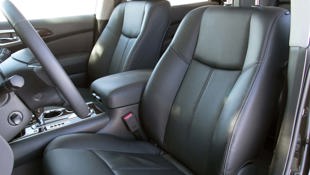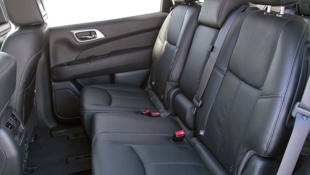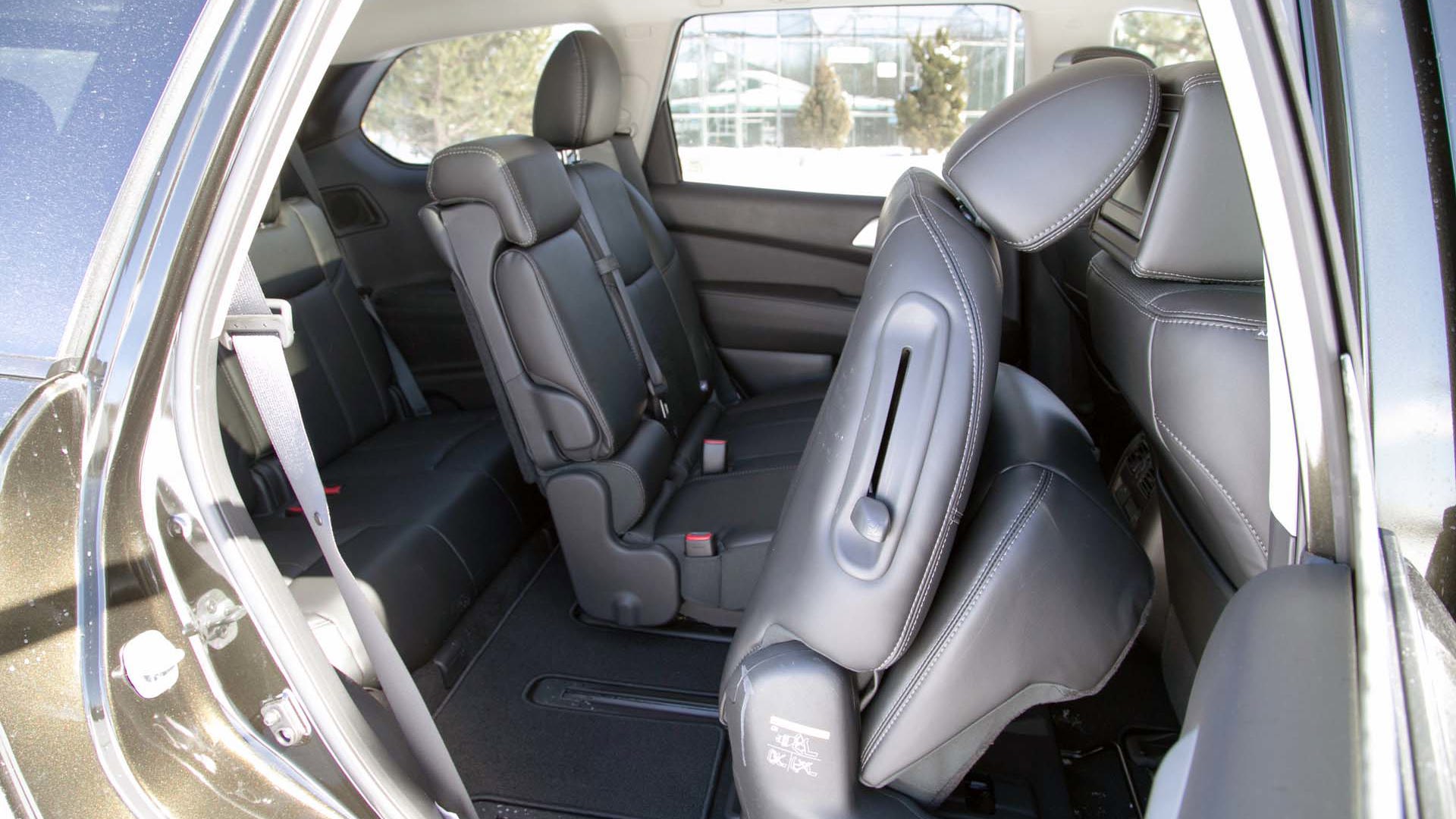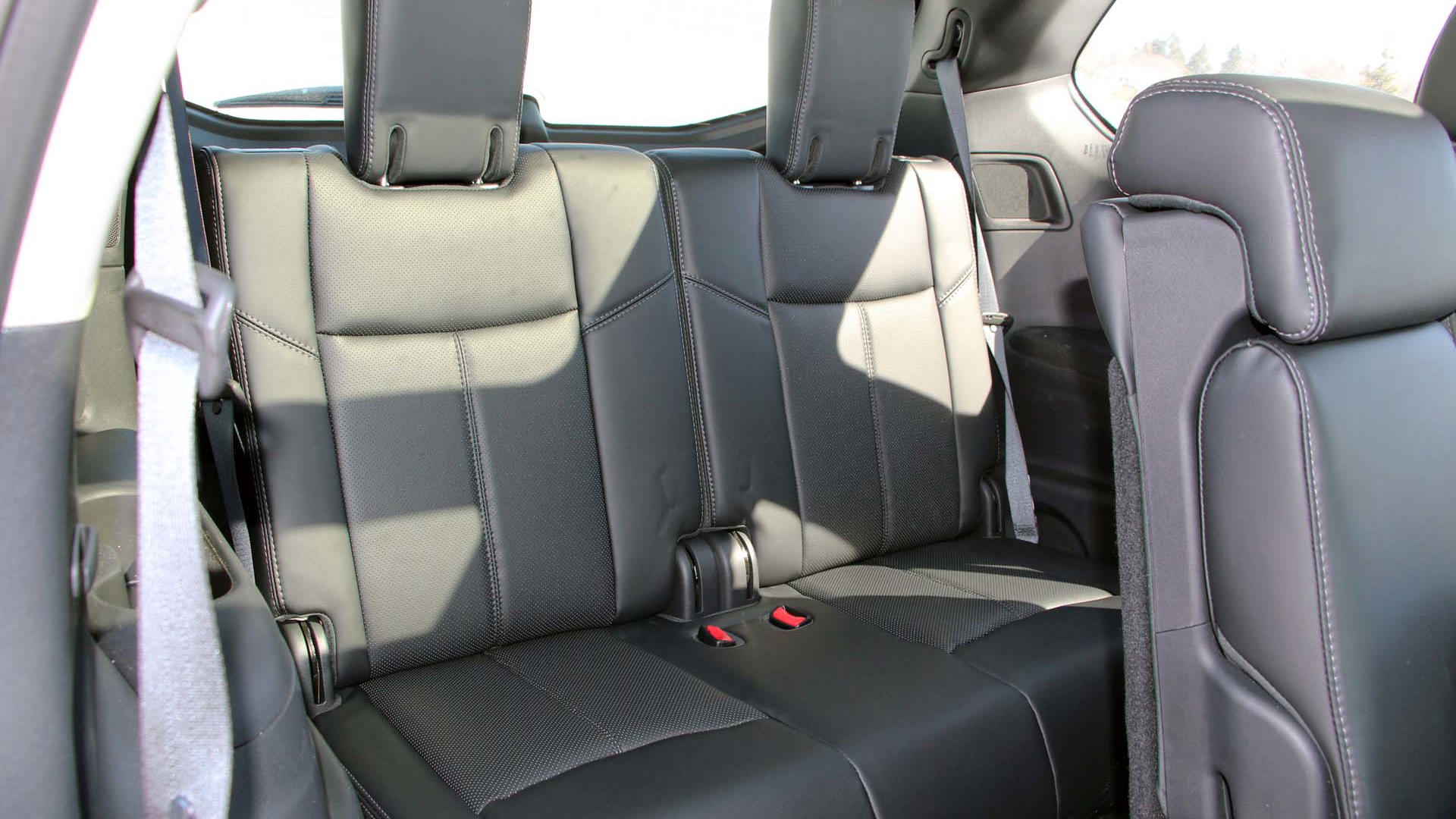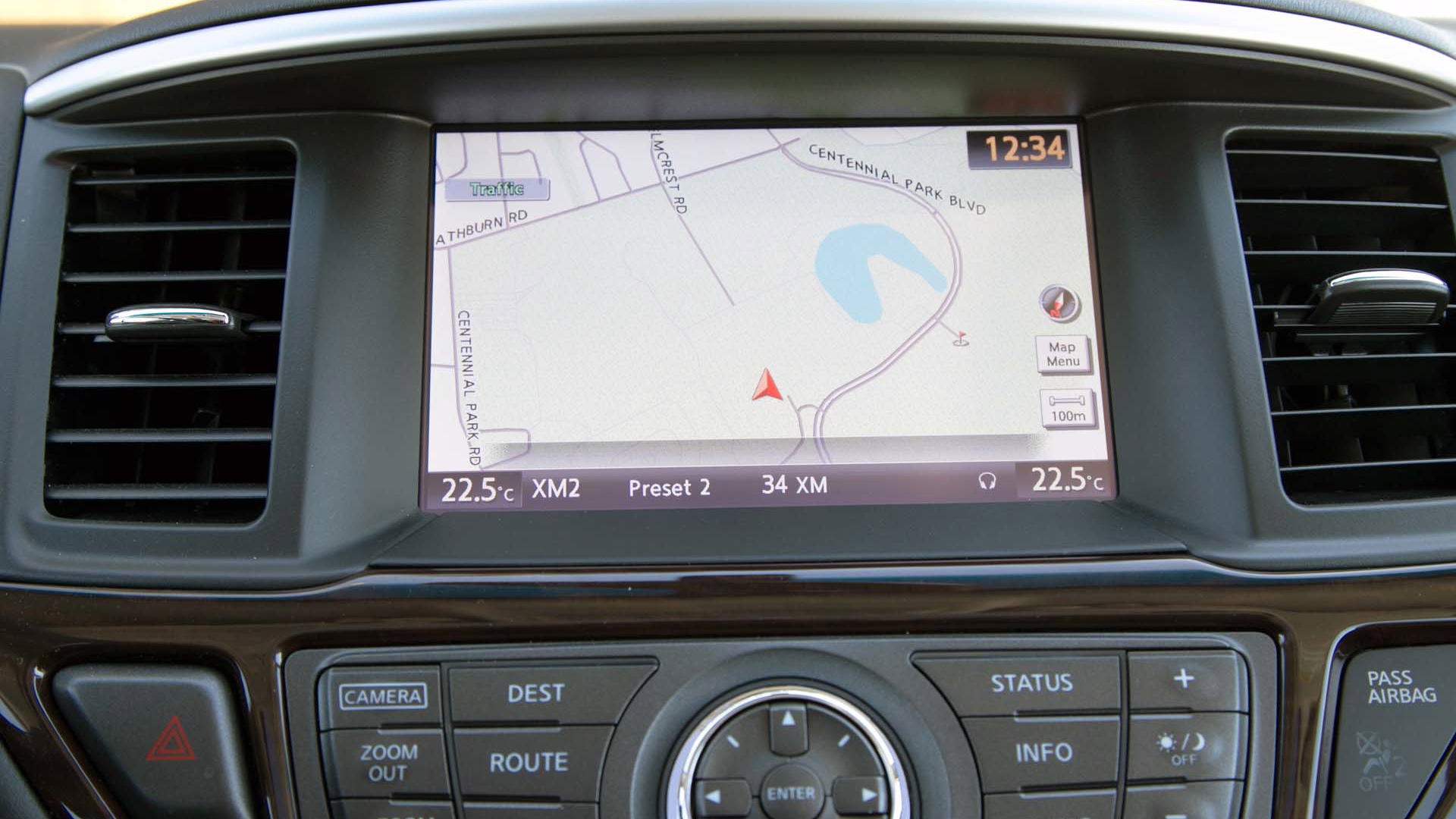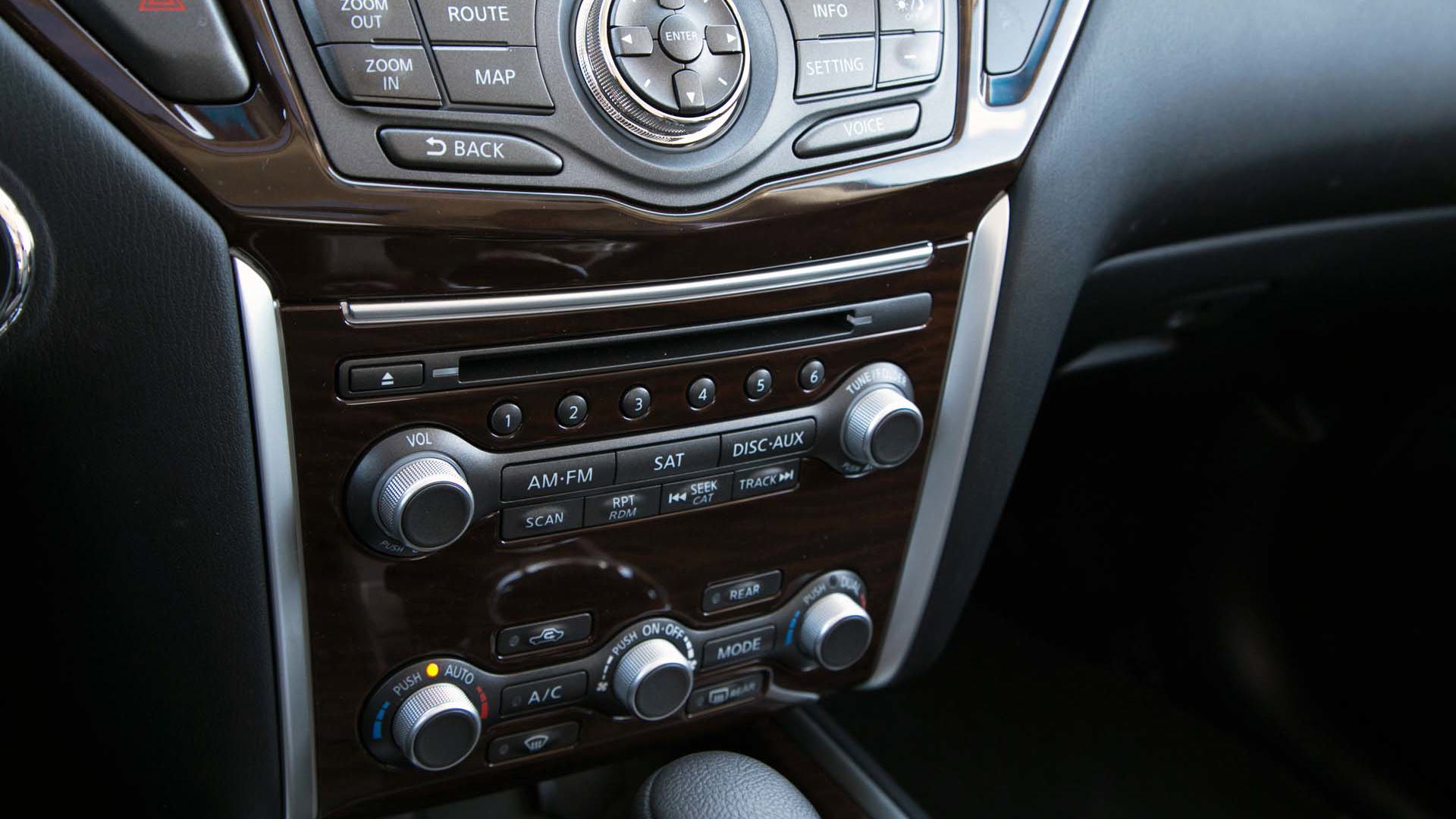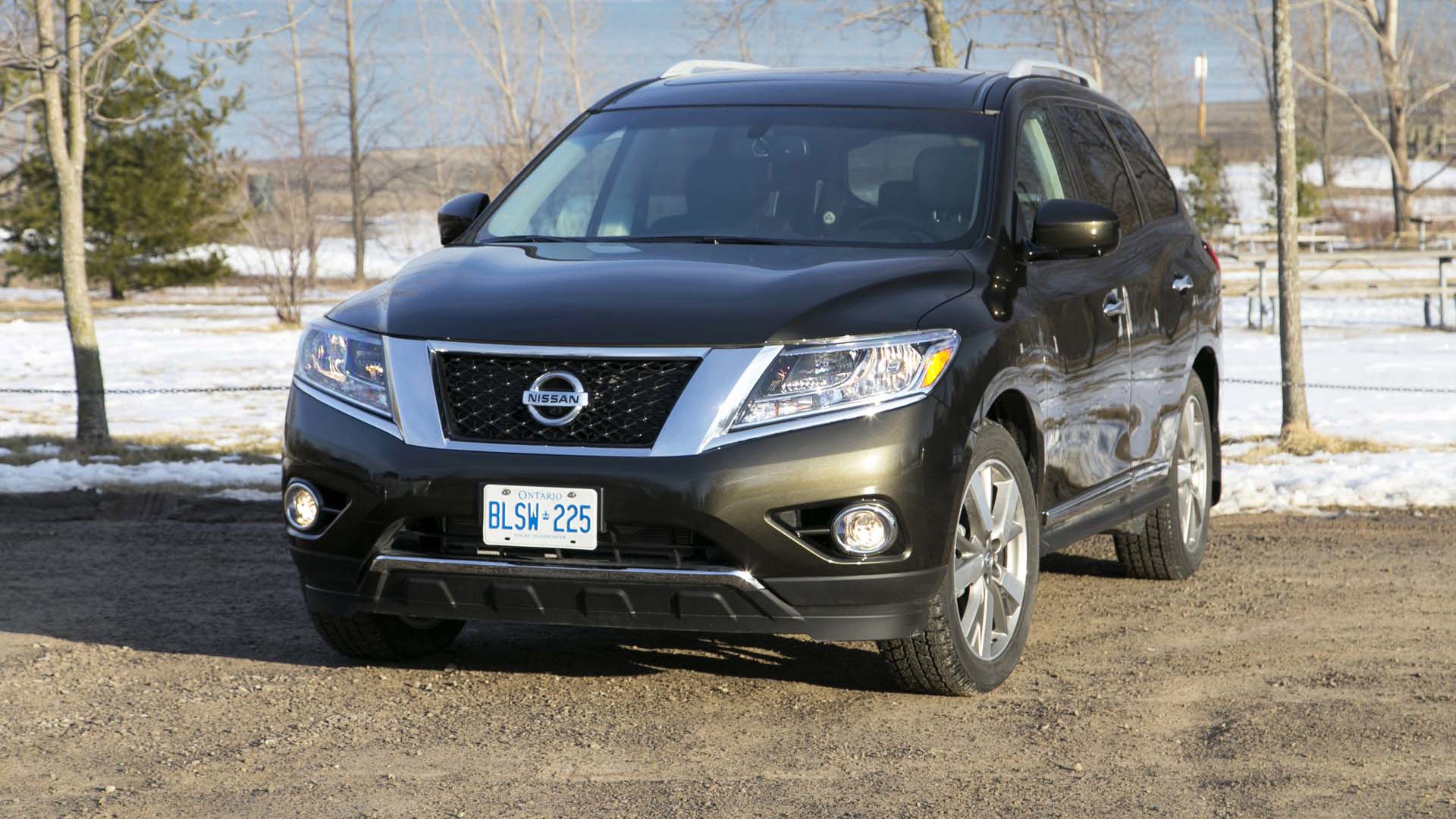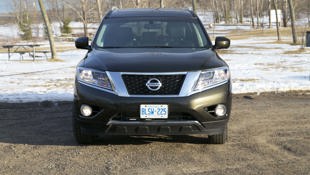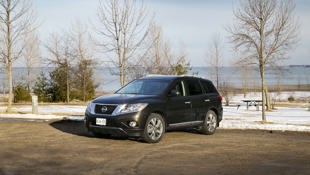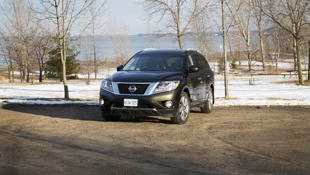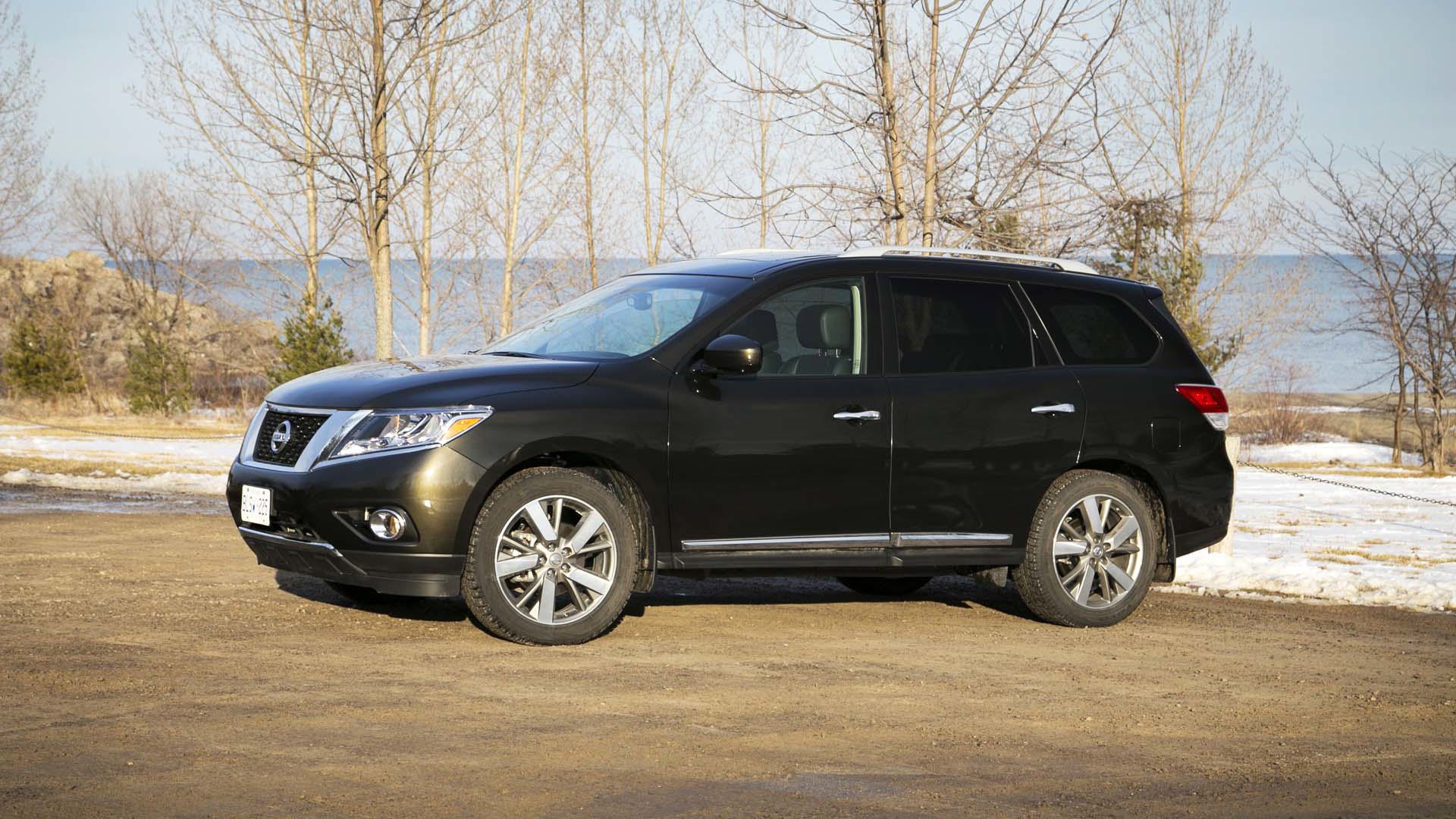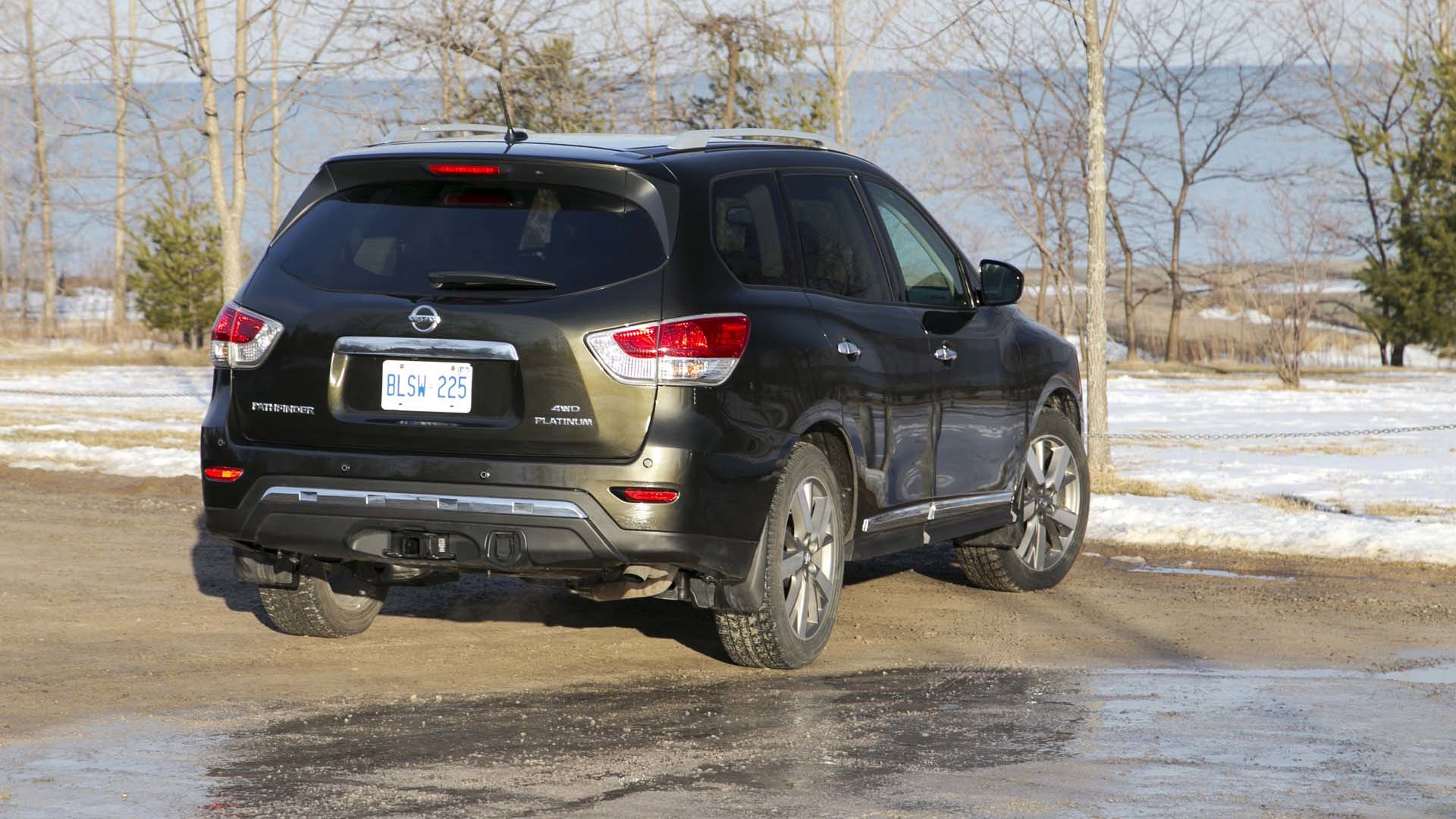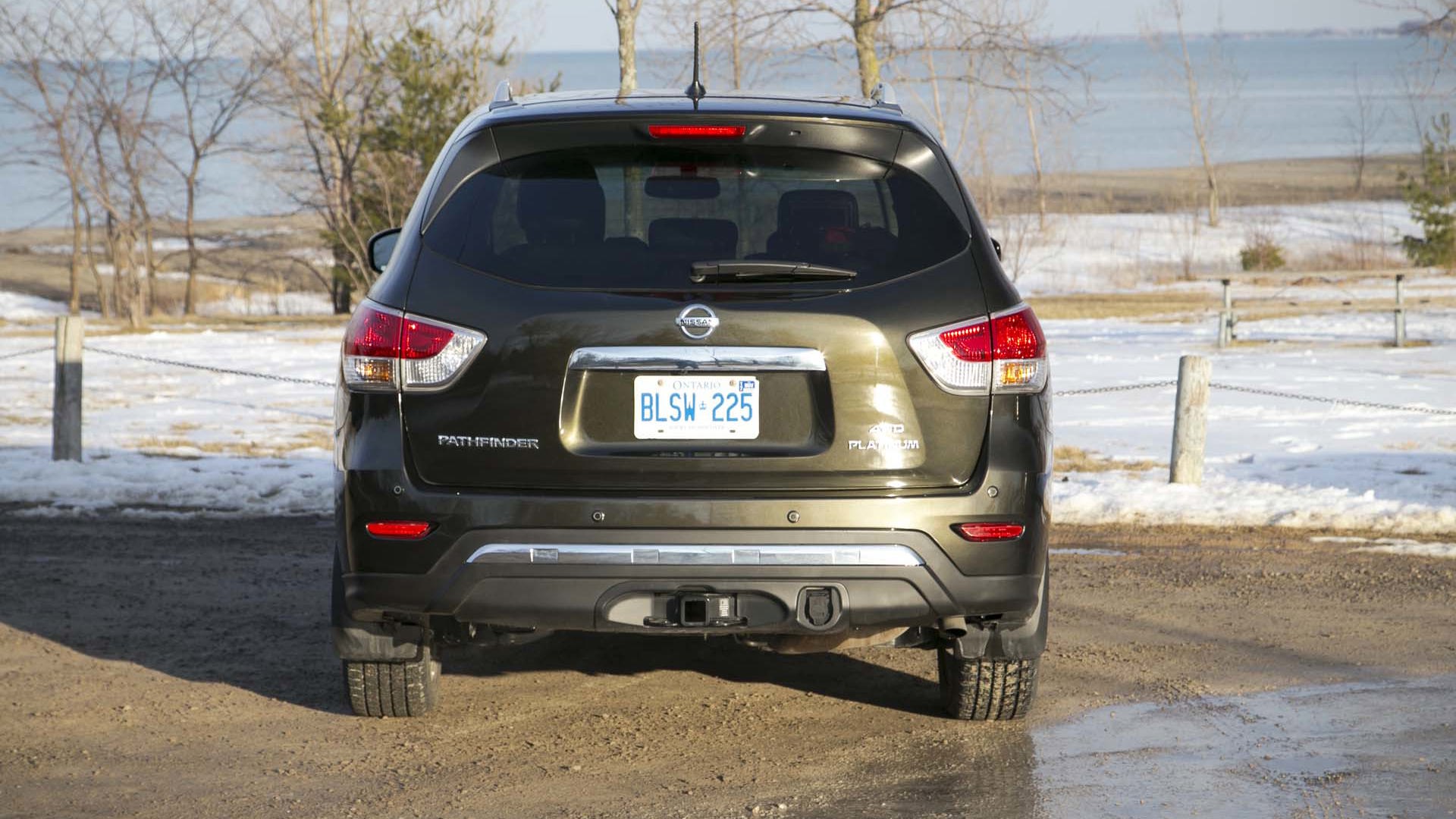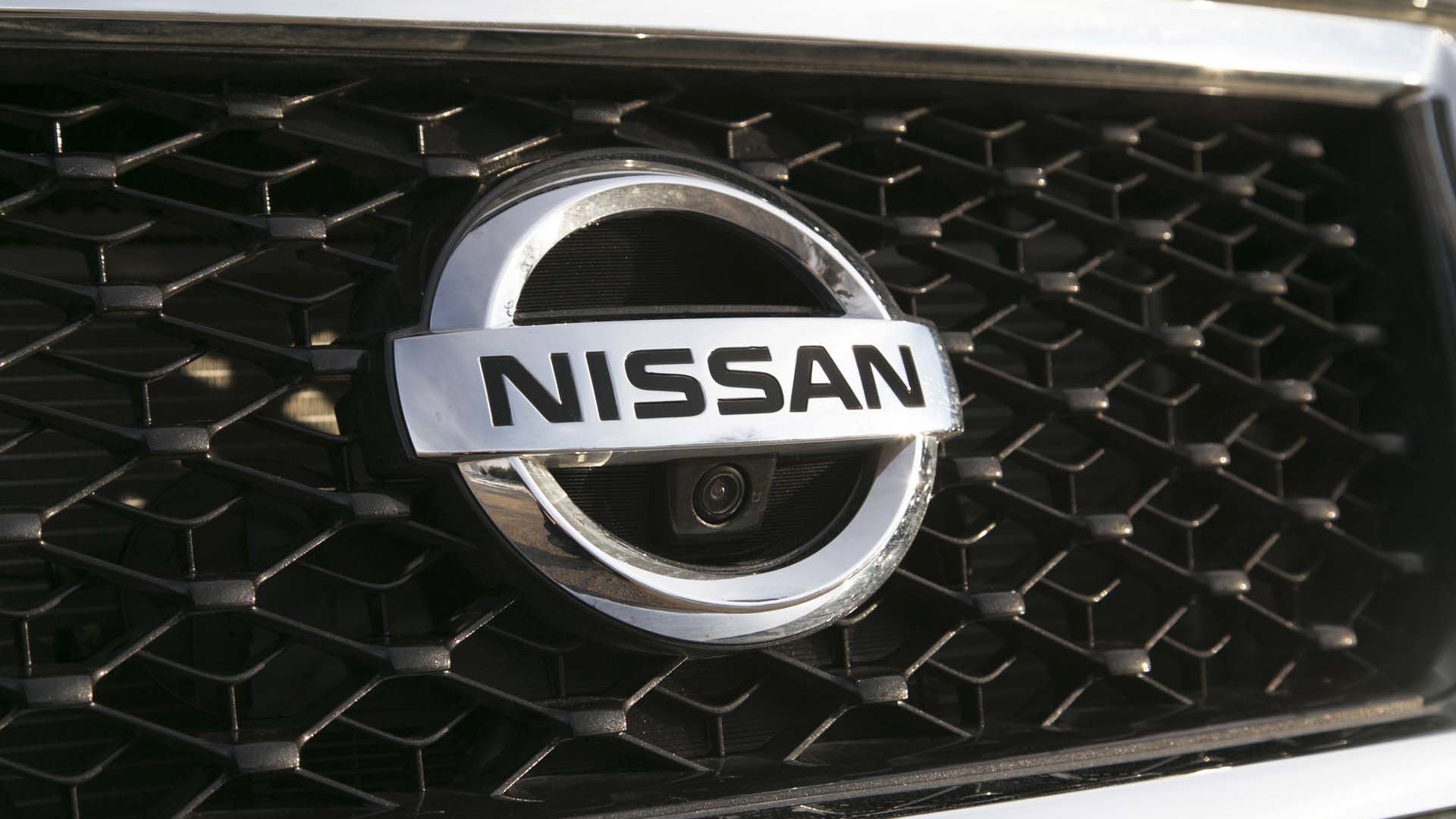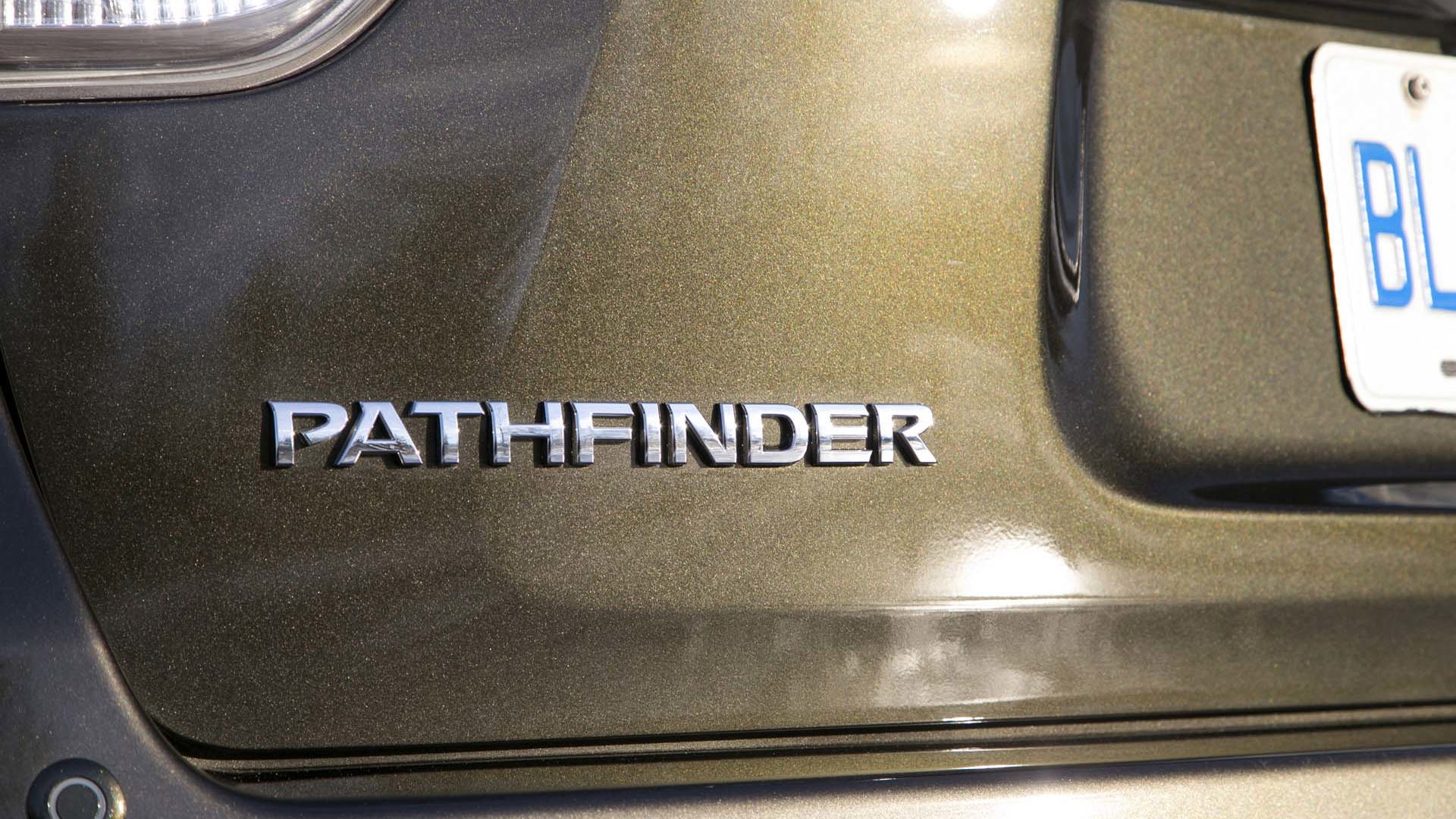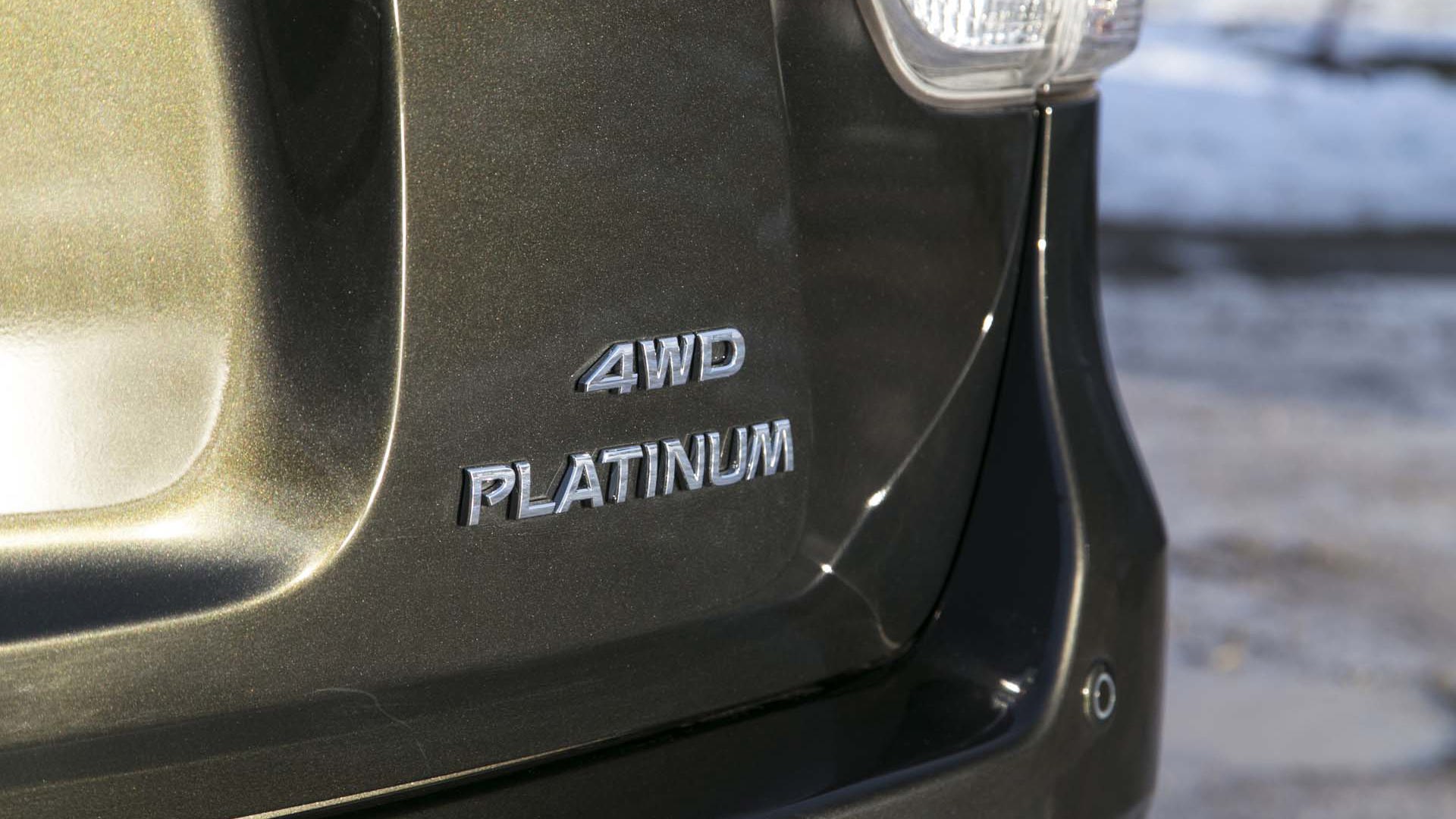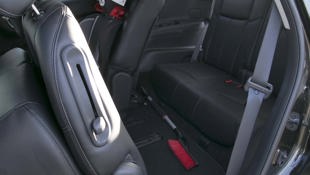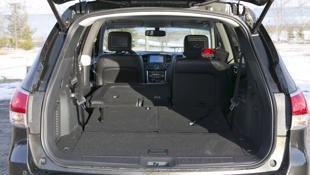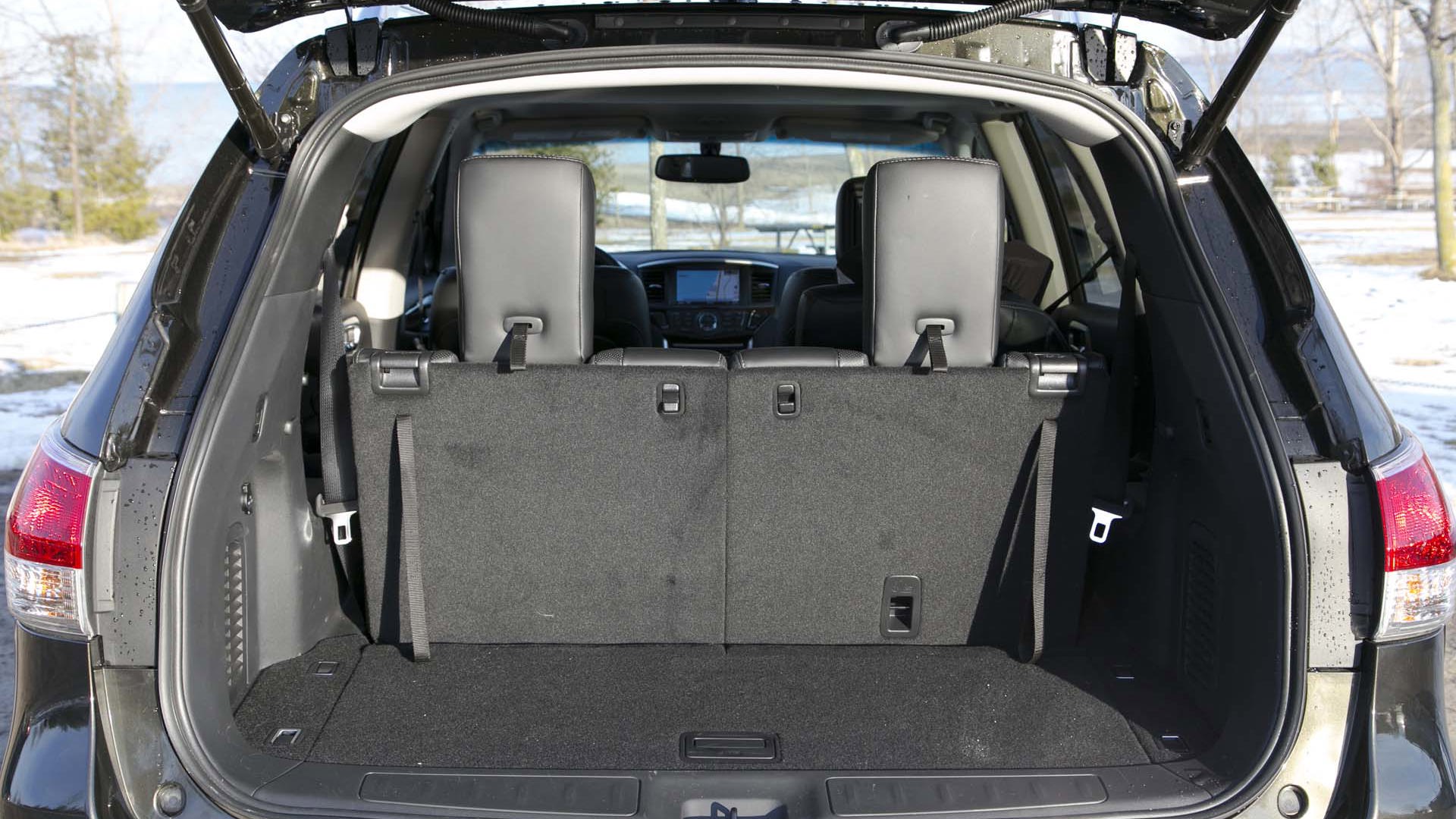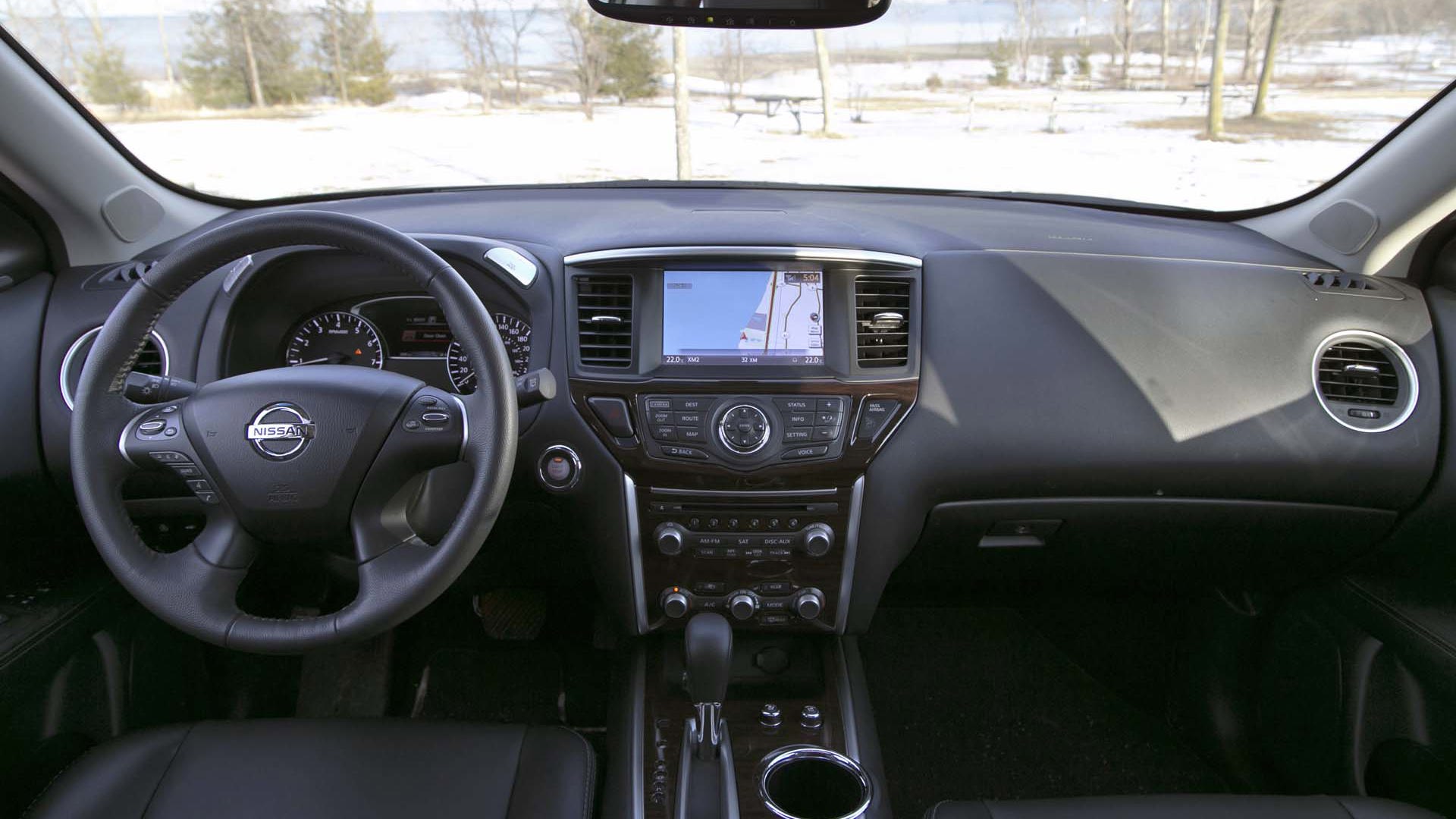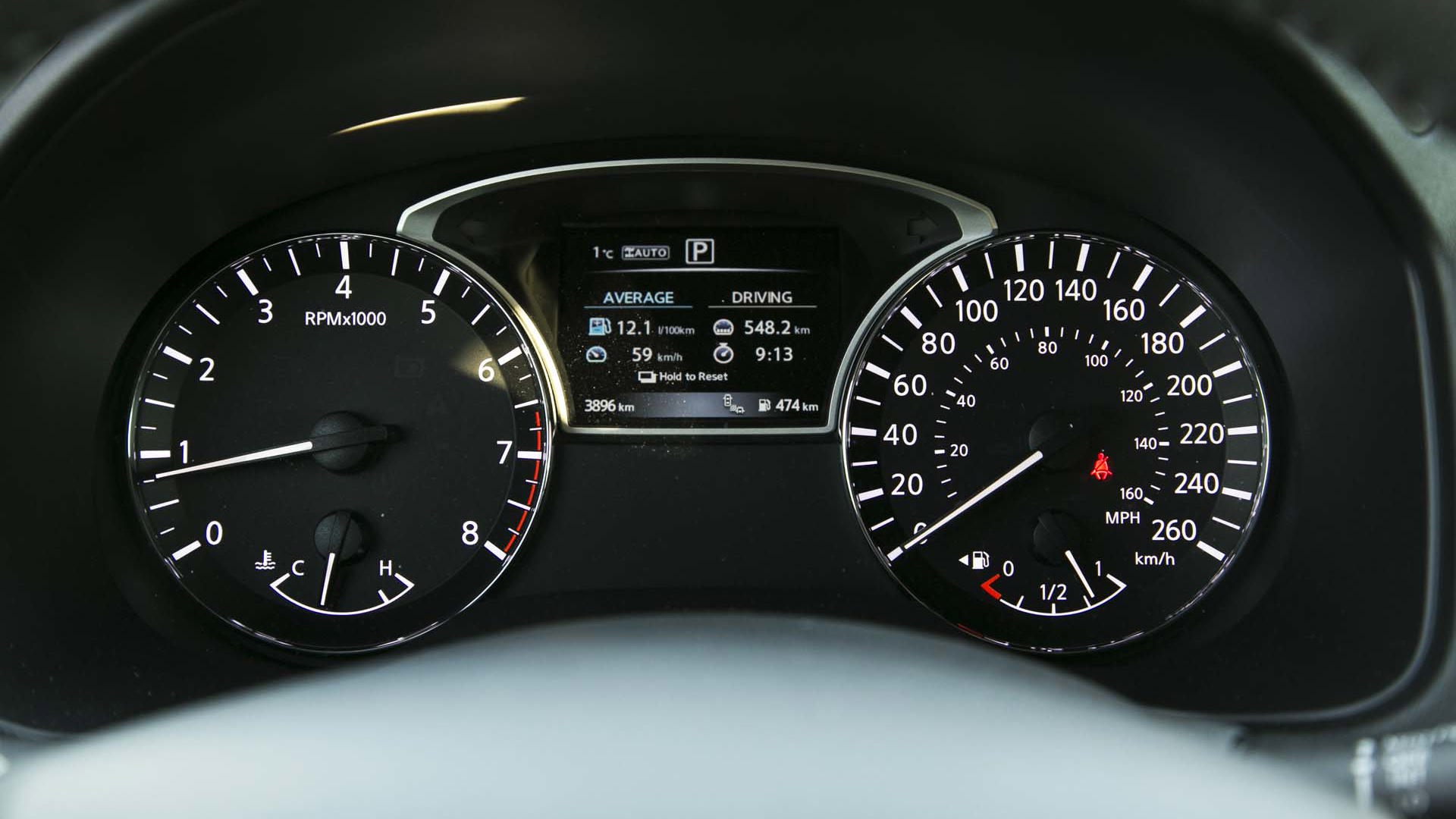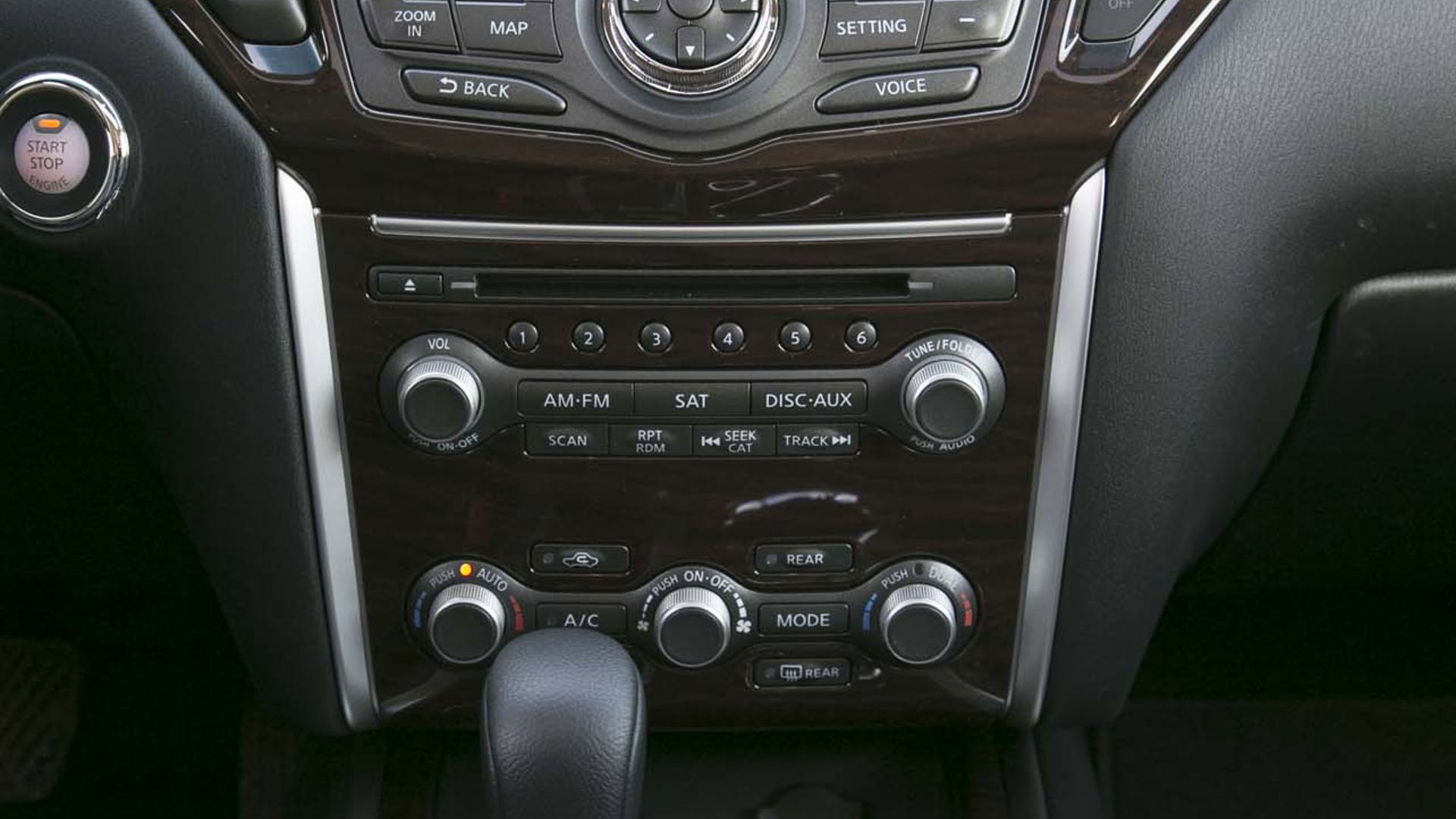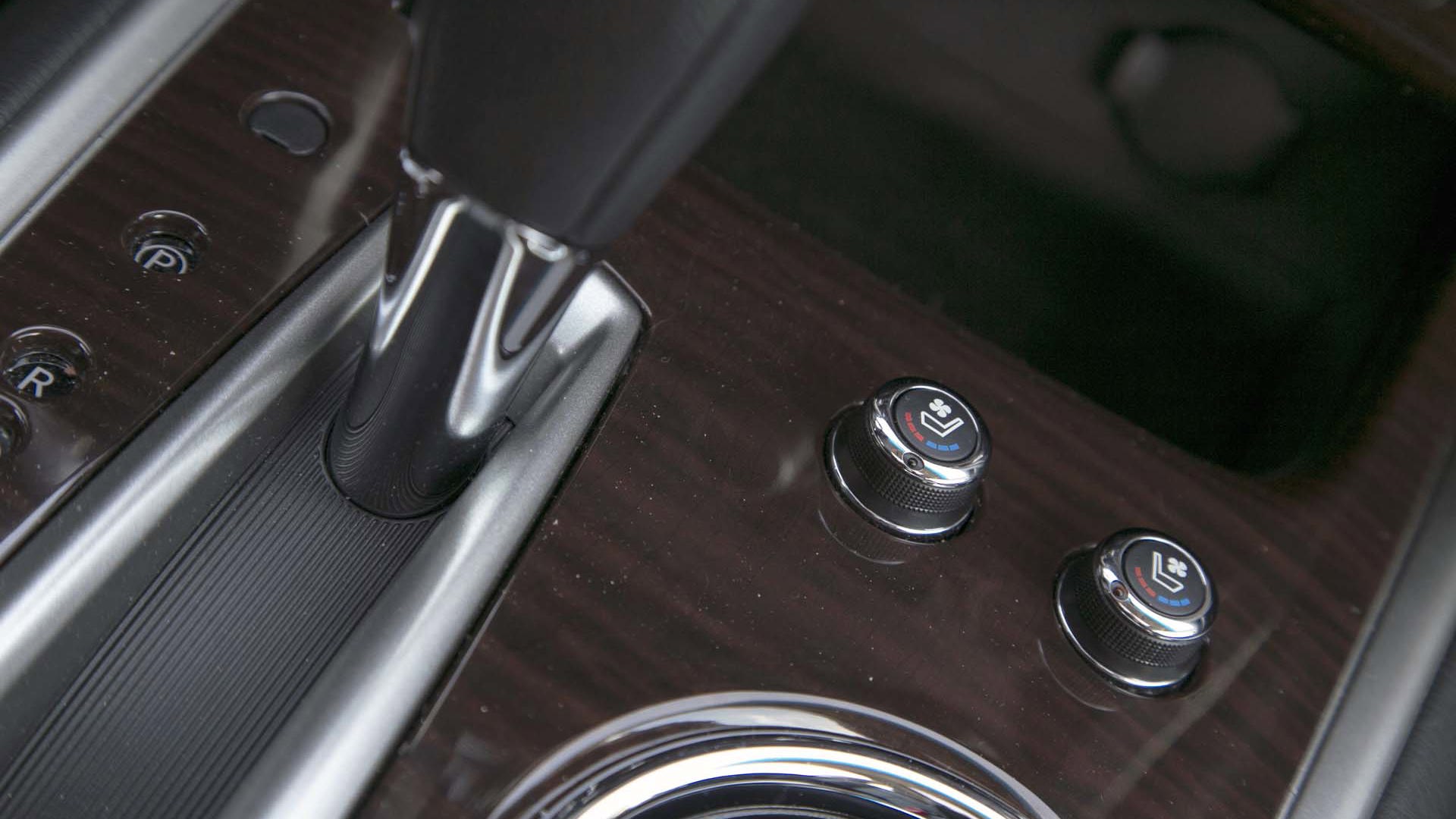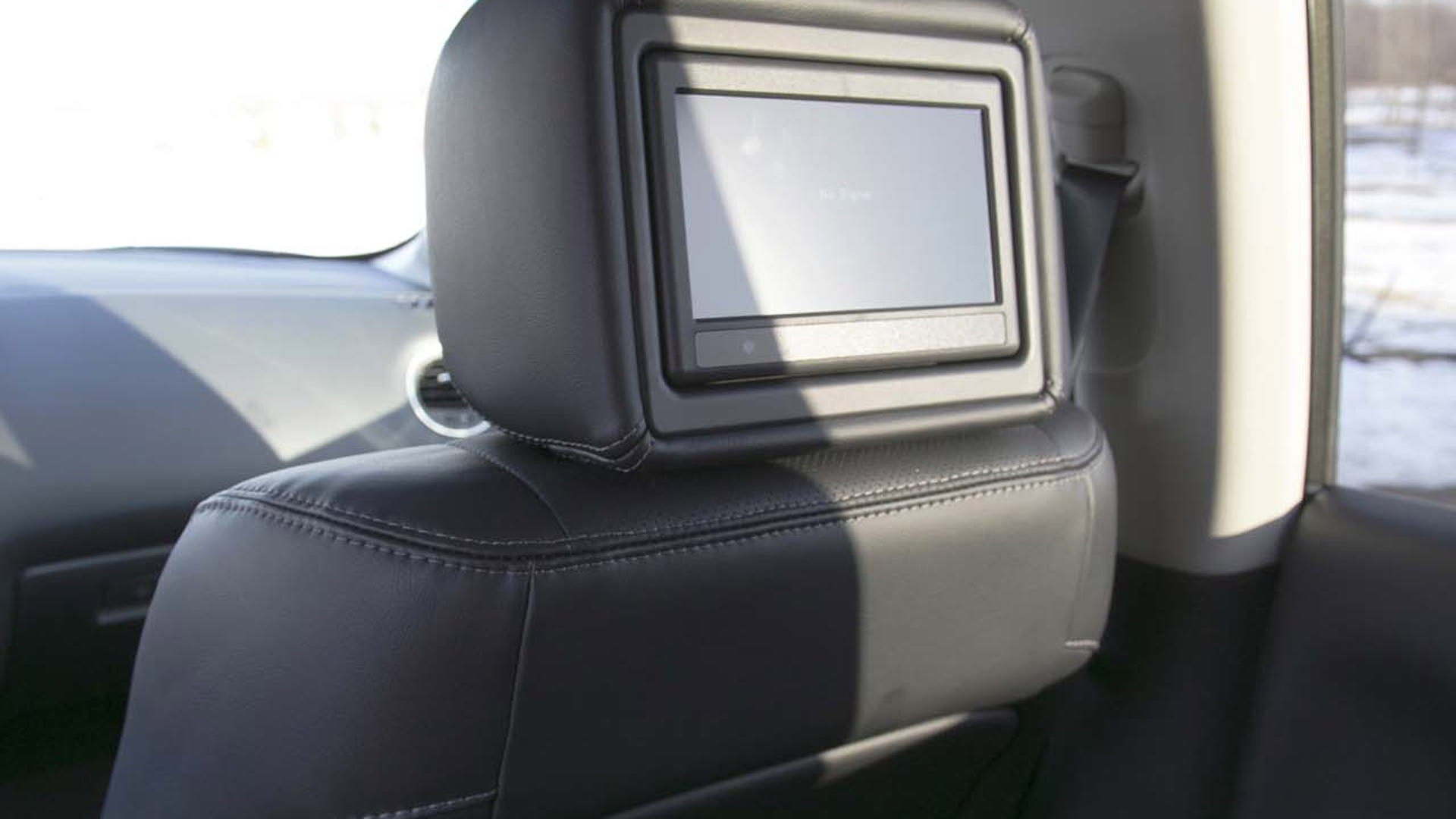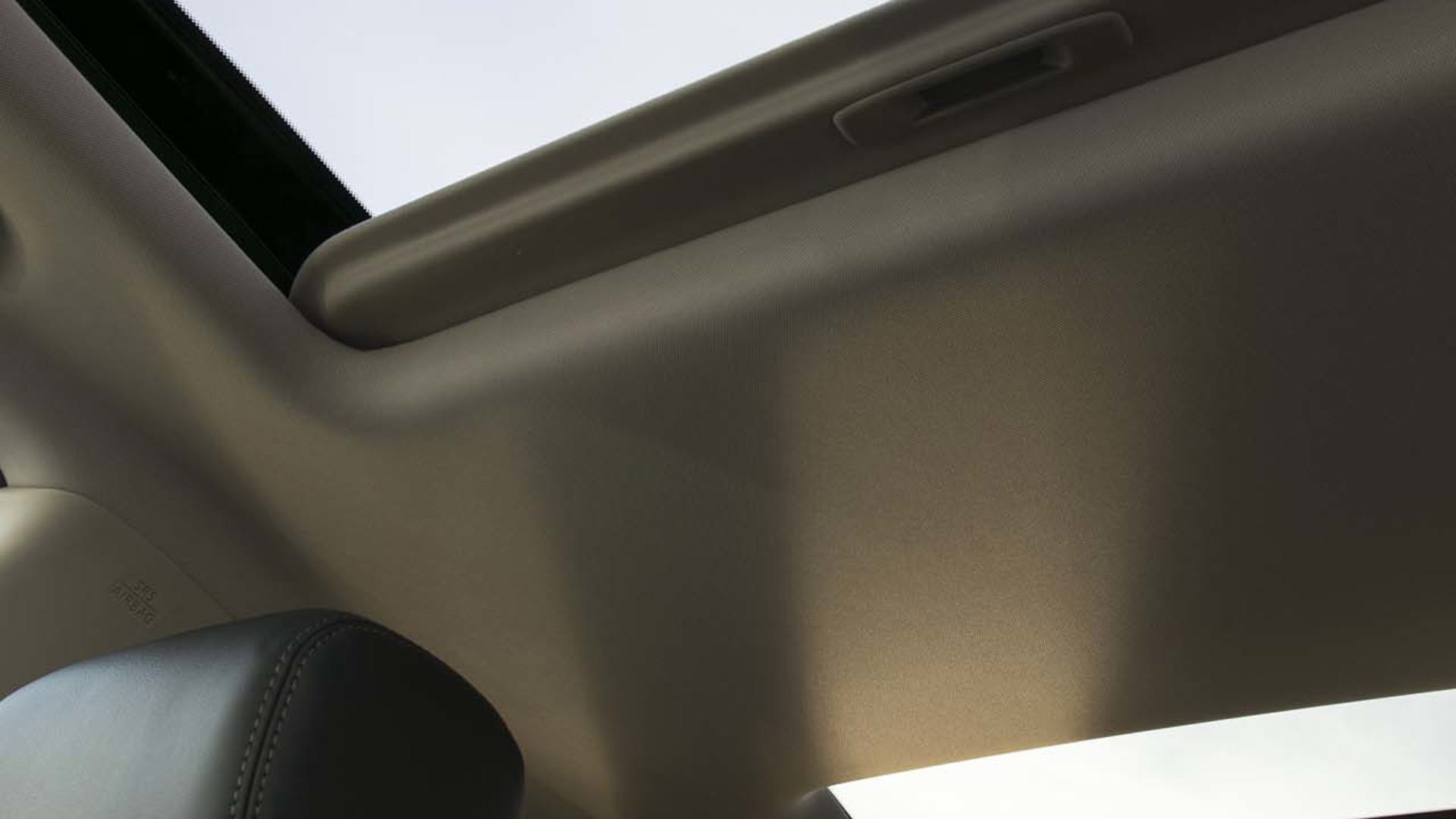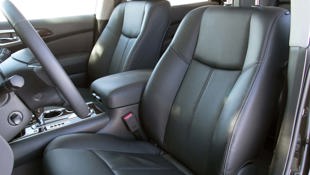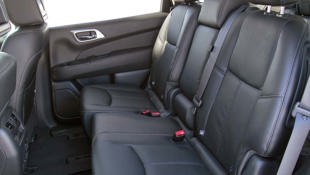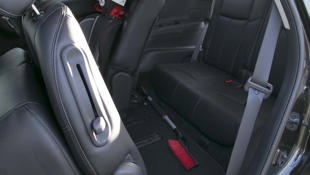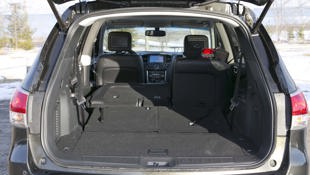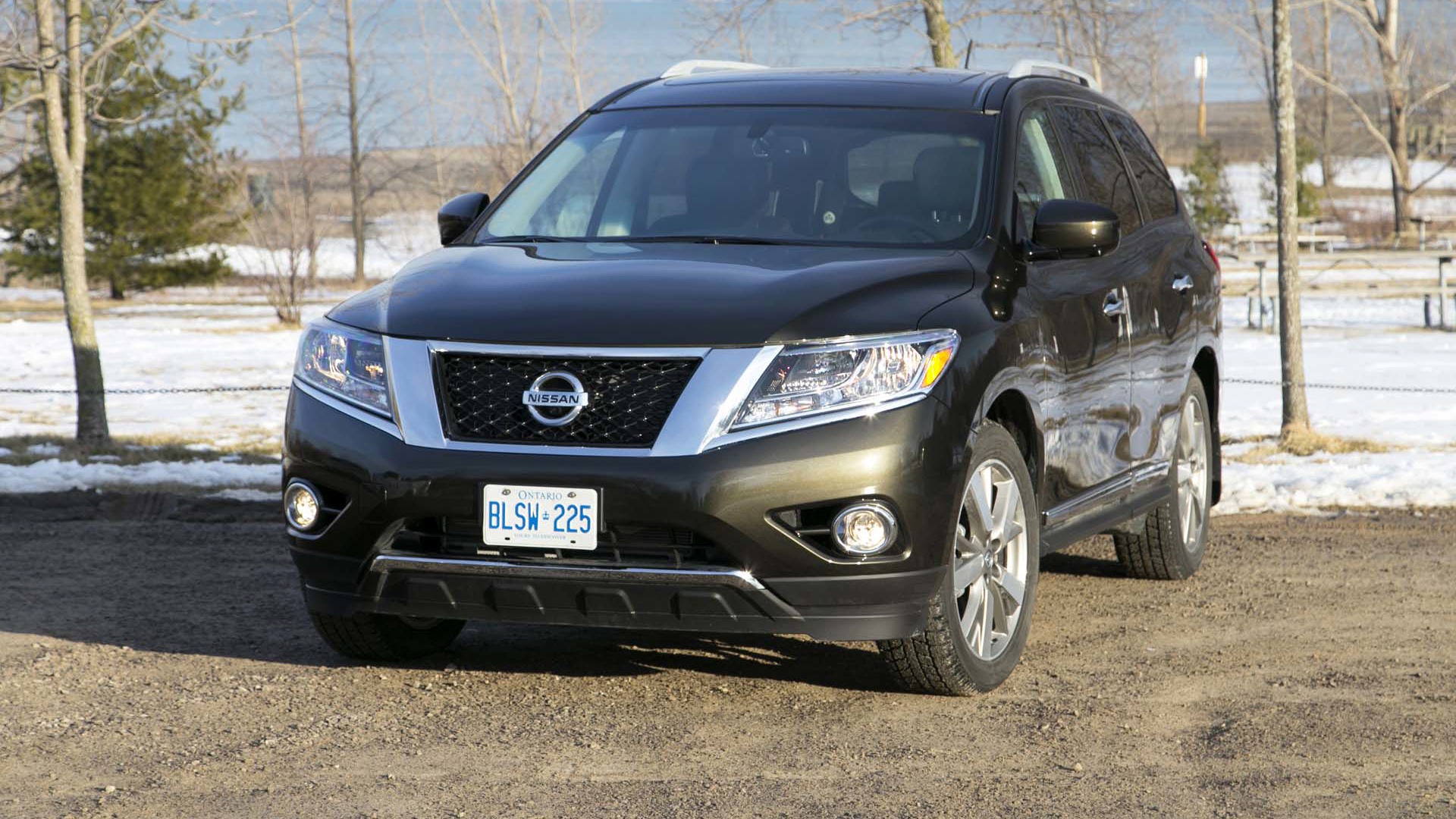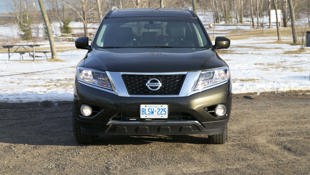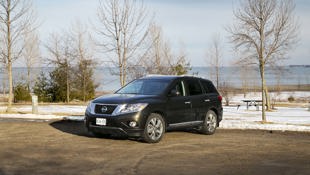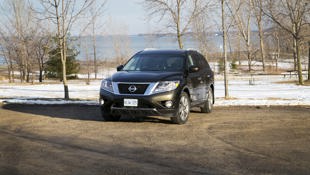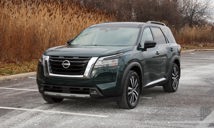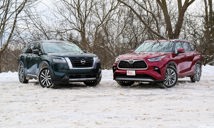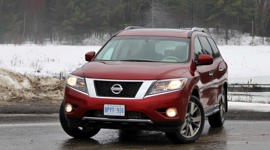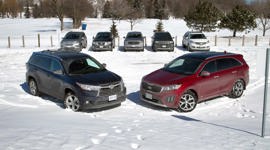 AutoTrader SCORE
AutoTrader SCORE
-
EXTERIOR STYLING7/10
-
INTERIOR8/10
-
PERFORMANCE7/10
-
COMFORT8/10
-
FUEL ECONOMY7/10
The Nissan Pathfinder has had a curious past. Originally based on the Nissan Hardbody pick up, the first Pathy was a proper body-on-frame truck. As a competitor to other truck-utes of the day it faced off most squarely against Toyota’s 4Runner, where it remained a formidable foe for decades, going through a transition in its second generation to a unibody structure, then back to body-on-frame truck-ness for the third generation.
Even three years into the model’s life cycle, Nissan’s big family wagon remains an excellent choice in the class.
In 2013, the fourth generation Pathfinder – the one you see here – was released, and once again appeared in a more car-like, crossover unibody format, abandoning its battle with the 4Runner, and setting its sights on the better-selling Toyota Highlander. The transition makes sense, as Nissan was clearly giving consumers what they asked for: a more efficient, more comfortable, more manageable family-hauling machine, but I’d be lying if I said I didn’t lament the loss of the more rugged previous-gen Pathfinder. It’s kind of like watching The Terminator become the Kindergarten Cop.
Nissan was on a quest (excuse the automotive pun) to give crossover consumers a class-leading vehicle in practical and spacious interior design. And we’re happy to report that even three years into the model’s life cycle, Nissan’s big family wagon remains an excellent choice in the class.
When launched, one of the features Nissan’s marketing folks most proudly boasted about was the ability to slide and fold the second-row seating to allow access to the third row, but without the need to remove a secured child seat in that second row. For anyone with a sizeable brood of children requiring both rear rows of seats, this is a very big deal. Even without a child seat affixed to the second row perch, the ease with which the seat moves out of the way – and the size of the opening it provides to the third row -- is worth noting.
Regardless of which seat passengers choose in the Pathfinder, they’re well taken care of. Even the third row occupants are provided separate climate control (Tri-zone automatic climate control is standard all Pathfinder trim levels), plus the seatbacks recline a bit, aiding comfort. The view out isn’t half bad either, with decent-sized windows for the back of the bus.
Life gets even better for the second row passengers who enjoy more comfortable – and roomy (and heated) – seating, and in our top-level Platinum trim, their own sunroof and twin monitors mounted into the backs of the front seat headrests. A household-style plug point ensures nearly any sort of entertainment system can help keep kids occupied and ignoring the scenery on family trips.
MPVs and MVPs: Three-Row Crossover Comparison
The driver and front seat passenger are also provided agreeable quarters with comfortable bucket seats swathed in soft black leather and can be heated or cooled. The dashboard and door panels are made of premium, low-sheen, soft-touch plastics, and even the faux wood and plastic ‘chrome’ trim pieces on the central dash and console are pretty convincing. In Platinum trim, this family vehicle does a pretty convincing impression of a luxury car.
It’s all laid out in a very stylish way, as well, but also one that makes ergonomic sense, too, with good use of easy to use knobs for primary audio and climate controls, and clean, legible, white-on-black primary gauges. Good work, Nissan.
The one caveat to the ergonomic praise is directed at Nissan’s infotainment system control that uses a dated rotary knob with four directional buttons on it. Thankfully the eight-inch screen is also touch actuated, but some of the logic behind the menu system and operation is lost on me.
Still, praise should be directed to Nissan for the decent-sounding 13-speaker Bose sound system that offers plenty of bass. The navigation system’s graphics are also decent, and Nissan’s Around View Monitor is simply exceptional. Utilizing small cameras mounted around the exterior of the vehicle, the driver is provided a clear overhead view of the Pathfinder in its space, ensuring a perfect placement within a parking spot every time.
The Pathfinder driving experience is a good one too. Sporting performance should be low on any three-row crossover buyer’s priority list, but ride quality is likely to be of reasonable importance, especially in a vehicle as otherwise luxurious as this Nissan. Happily the Pathfinder’s ride, thanks in part to its very long 2,900 mm wheelbase, is quite supple. On the other hand, the nearly 2,100 kg bulk, coupled with a softly-sprung suspension means the Pathfinder does float around a bit in the corners, though most buyers are likely to be happy with the trade off.
All new Pathfinders are powered by a 3.5L, 24-valve V6 engine (last year’s Hybrid offering has been canned) that puts out 260 hp and 240 lb-ft of torque. Those numbers are sufficient to move the big crossover around without feeling strained, however the engine is a little coarse-sounding and not as smooth as some of the best competitors’ V6s.
Nissan loves its efficiency-minded Xtronic CVT (Continuously Variable Transmissions) and as in nearly every offering from the brand, it’s the sole transmission choice here too. And while my general dislike for the obnoxious rev-and-hold manner in which of most CVTs operate is no secret, I will confess that this transmission gave me nothing to complain about. Even the typical elastic-band sensation of most CVTs has been quelled here, perhaps due to the fact that Nissan employs a chain instead of a belt like most CVTs. This also helps the Pathfinder achieve a tow rating of 2,268 kg.
Nissan provides a three-mode all-wheel-drive setting for the Pathfinder, enabling the driver to choose between a fuel-saving FWD mode, full Auto mode or an AWD lock mode. It’s yet another part of the overall Pathfinder experience that shows the amount of consideration Nissan put into owner concerns when developing this generation.
The government rates the Pathfinder’s fuel efficiency at 8.9 l/100 km highway, and 12.1 l/100 km city, both of which are reasonable and competitive for a vehicle of this size.
So the Pathfinder is commodious and capable, but it’s also an attractive crossover, with its 20-inch wheels, impressive chrome-flared grill, and in this case, beautifully finished in the interesting dark metallic green-brown colour of our test vehicle.
Sales of the Pathfinder are up despite newer offerings from other major category players like Toyota and Honda; its success due in no small part to the solid value, good driving experience and impressive luxury the Pathfinder provides its owners.
Despite not being a full-on rugged truck-based SUV anymore, Nissan’s Pathfinder is better suited for meeting today’s sport-ute consumers’ needs, and should definitely be on the shortlist of anyone shopping the segment.
| Warranty: 3 years/60,000 km; 5 years/100,000 km powertrain; 5 years/unlimited distance corrosion perforation; 3 years/60,000 km roadside assistance Competitors: |
| Model Tested | 2016 Nissan Pathfinder Platinum 4WD |
|---|---|
| Base Price | $46,998 |
| A/C Tax | $100 |
| Destination Fee | $1,760 |
| Price as Tested | $48,993 |
|
Optional Equipment
Metallic / Pearl paint, $135.
|
|
